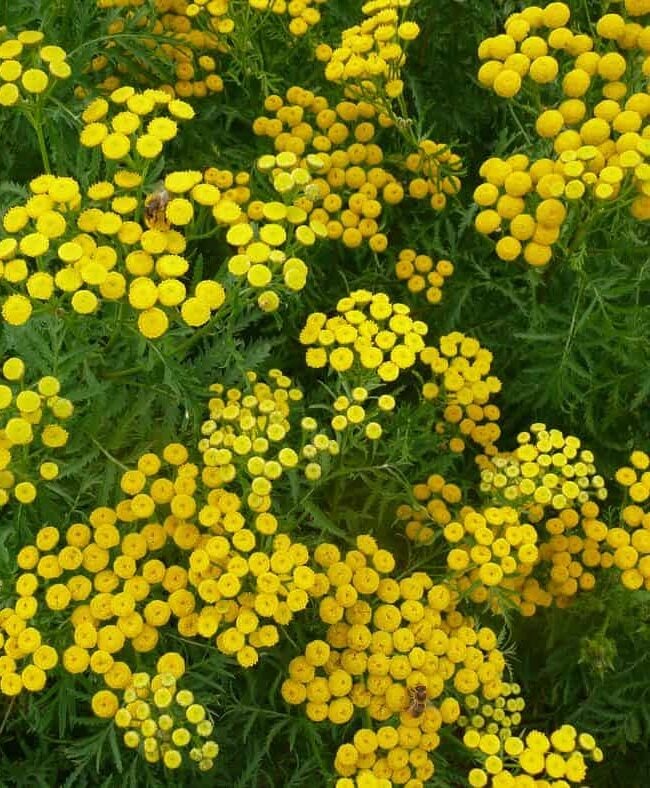Description
Tansy is a native, perennial member of the daisy family. In a daisy what appears to be a flower is in fact a tight head of tiny yellow flowers known as the floral disc surrounded by white petal like structures called ray florets. In tansies the ray florets are absent giving the flower heads a button like appearance. These flower heads are arranged in flat-topped clusters where the 50-150cm tall stem branches towards its top. The stem its self is erect, stout and often tinged red and arranged alternately up the stem are finely divided almost fern like leaves. Both leaves and flowers are aromatic. Tansy is a late flowering plant, in bloom throughout August and September.
Habitat Information
Since medieval times tansy has been widely grown as a medicinal and culinary herb so although it is a native plant many populations are due to escapes from cultivation. It is found on a wide range of soils in grasses places subject to occasional disturbance such as river banks, road verges and waste ground. It once was used as a culinary herb but as it contains a toxic volatile oil called thujone its probably best avoided.
The tansy beetle Chrysolina graminis is resistant to this and other toxins and concentrates them in its tissues thereby making it toxic to potential predators. The tansy beetle is a highly attractive insect with metallic green almost jewel like elytra so much so that it is often stated that they were once used as sequins (although difficult to find any hard evidence for this being the case). Due to changes in land use and the limited ability of the insect to spread to new sites Chrysolina graminis is now very rare.
Growing Information
Can be sown at any time of the year, but if you are going to sow into seed trays then spring is best. Mature plants spread by rhizomes so can be dug up and divided in late autumn.


